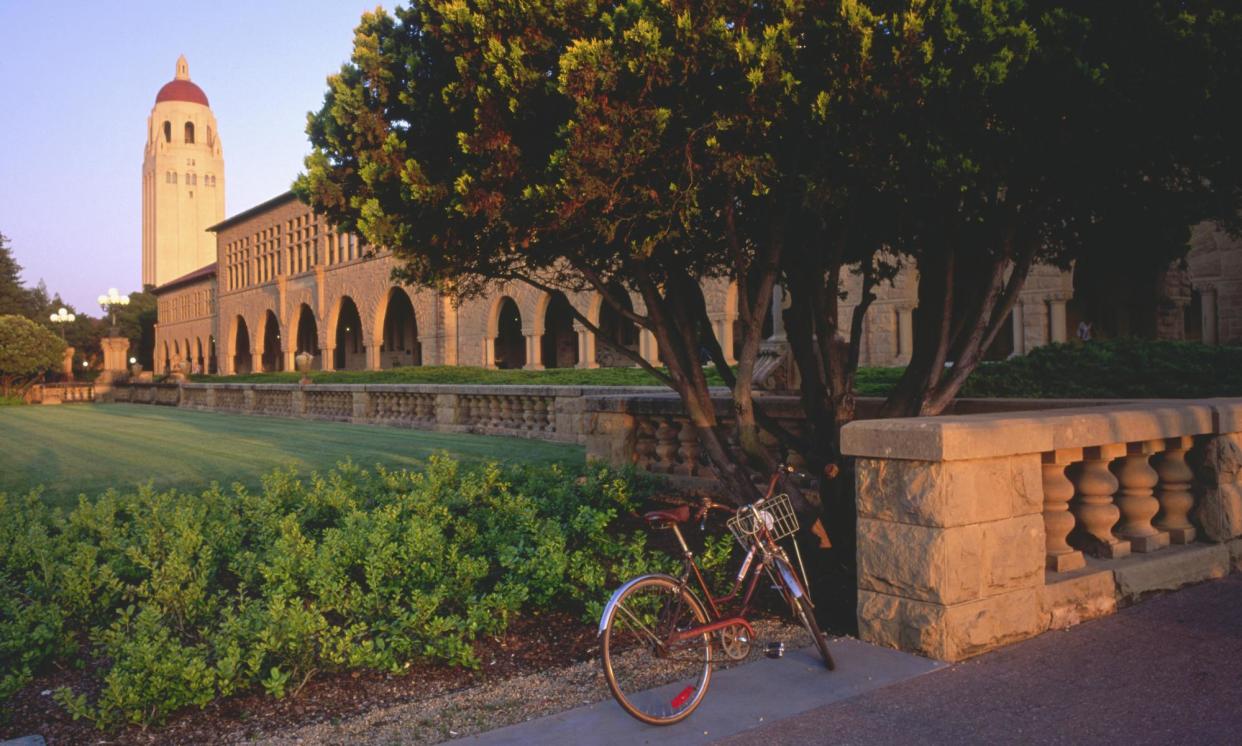‘I’ve waited a long time for this’: woman earns Stanford master’s degree at 105

Virginia Hislop took 83 years to get her master’s degree from Stanford University. Now, at 105 years old, she’s finally graduated.
“My goodness, I’ve waited a long time for this,” she said, walking across the stage on Sunday to receive her diploma. She was cheered on by her family, grandchildren and the 2024 graduating class.
Daniel Schwartz, the dean of Stanford’s Graduate School of Education, recalled worrying he would tear up as he introduced Hislop to the stage.
“Before I even got to the teary part, the crowd erupted and broke out into a standing ovation,” he said. “Virginia got her education at a young age, she just didn’t get her degree. It’s a great opportunity to come back and celebrate a life of comeback and education.”
Hislop had to leave Stanford early in 1941 when her fiance, George, was called to serve in the second world war. Unable to complete her thesis, she put her degree on hold and her university days behind her, later moving to Washington to raise their family.
When her son-in-law contacted the university recently, though, he discovered that the final thesis was no longer required to obtain the degree. Hislop was eligible to graduate decades later.
“I’ve been doing this work for years, and it’s nice to be recognized,” she told the university’s news site.
Hislop’s educational journey at Stanford began in 1936 when she enrolled to study for her bachelor’s degree in education. A few years later, she completed this milestone and immediately transitioned to her postgraduate studies, driven by her ambition to teach after university.
In 1941, Hislop, like many other women across the US, was forced to trade her career for marriage in support of the broader war mobilization. Focusing on the family was seen as the pinnacle of American sacrifice in that period, and she left Stanford to marry George before his deployment, honeymooning in Oklahoma near his army post at Fort Sill.
After the war ended, the couple moved to Yakima, Washington, where they raised their two children.
“I didn’t return to teaching, but I feel I put my teaching certificate to good use serving in committees and on boards and trying to improve the educational opportunities every chance I got,” Hislop told the Yakima Herald-Republic in an exclusive interview back in 2018.
Indeed, Hislop’s formal education might have ended in 1941 with her early departure from Stanford, but her work in the following years was instrumental and transformative.
She opposed the regressive middle school curricula that required her daughter to take home economics over English and lobbied for independent community college districts in Washington State.
Later, she raised funds for Heritage University, a female-founded and -led institution, and also helped collect $6m for students hoping to attend the school.
A scholarship at Pacific Northwest University bears her name.
Schwartz, the Stanford dean, described her as “a fierce advocate for equity and the opportunity to learn” when handing her the deserved red diploma all those years later.
“For a lot of people the degree is a badge of accomplishment, and it was great to be able to celebrate someone who cared so much about learning, and dedicated her lifetime to other people’s learning,” he said.
“Even though we gave her the degree, she really gave us something that day.”


